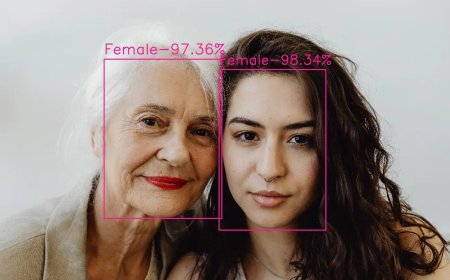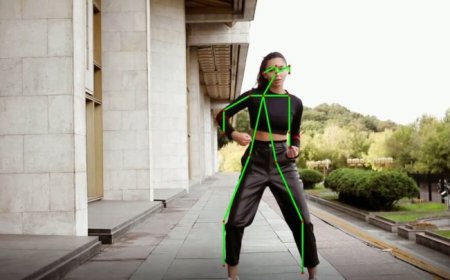Hello! I'm İbrahim ÖZTÜRK.
If you’re looking to step into the world of machine learning, you’re in the right place! I have prepared a comprehensive, understandable, and hands-on machine learning training course just for you. This six-month program, totaling 90 hours, will provide you with a broad range of knowledge from the fundamentals of machine learning to advanced topics.
Training Content:
- Total Course Duration: 96 hours
- Total Training Duration: 6 months
- Participation Options: Online or in-person
- Duration of Each Class: 45 minutes
- Weekly Class Hours: 2 days per week, totaling 4 class hours per week
- Payment Methods: Monthly installments or one-time total payment for package training
- Training Fee: 1121,82 €
- Package Training Full Payment Fee: 1050 €
Training Topics:
Introduction to Machine Learning
- What is Machine Learning?
- Definitions and key concepts
- History and evolution of machine learning
- Types of Machine Learning
- Supervised Learning
- Unsupervised Learning
- Reinforcement Learning
- Machine Learning Process
- Data collection and preparation
- Model selection and training
- Model evaluation and improvement
Python and Data Science Basics
- Python Programming Language
- Python installation and basic features
- Using Jupyter Notebook
- Data Science Libraries
- NumPy: N-dimensional arrays and mathematical operations
- Pandas: Data structures and data processing
- Matplotlib and Seaborn: Data visualization
- Data Preprocessing
- Handling missing data
- Data normalization and standardization
- Encoding categorical data
Data Visualization and Exploratory Data Analysis (EDA)
- Data Visualization Techniques
- Histograms, distribution plots, box plots
- Line plots and heatmaps
- Distribution and relationships: scatter plots, pair plots
- Exploratory Data Analysis (EDA)
- Data summarization and descriptive statistics
- Identifying patterns and anomalies
- Feature engineering: Creating new features
Supervised Learning
- Regression Analysis
- Simple Linear Regression: Model building, accuracy assessment
- Multiple Linear Regression: Working with multiple variables
- Improving regression models and accuracy metrics
- Classification
- Logistic Regression: Binary classification problems
- Naive Bayes: Statistical classification
- K-Nearest Neighbors (KNN): Neighbor-based classification
- Support Vector Machines (SVM): Classification and margin optimization
- Decision Trees and Random Forests: Tree-based classification and ensemble methods
Unsupervised Learning
- Clustering Algorithms
- K-means Clustering: Determining the number of clusters and application
- Hierarchical Clustering: Creating and applying dendrograms
- Dimensionality Reduction
- PCA (Principal Component Analysis): Reducing data dimensions
- t-SNE: Visualizing high-dimensional data
- Anomaly Detection
- Techniques and applications for anomaly detection
- Isolation forests and Local Outlier Factor (LOF)
Reinforcement Learning and Deep Learning Basics
- Reinforcement Learning
- Core concepts: Agent, environment, reward
- Q-Learning and Deep Q-Network (DQN)
- Model-free and policy learning
- Introduction to Deep Learning
- Neural networks: Basic building blocks and principles
- Keras and TensorFlow: Building and training simple neural networks
- Activation functions: ReLU, Sigmoid, Tanh
Model Evaluation and Improvement
- Model Evaluation
- Accuracy, Precision, Recall, F1 Score: Performance metrics
- ROC-AUC Curve: Evaluating classification performance
- Model Improvement
- Hyperparameter optimization: Grid Search, Random Search
- Overfitting and Underfitting: Identifying and addressing issues
- Cross-Validation: Testing model generalizability
Advanced Machine Learning Techniques
- Ensemble Methods
- Bagging: Model diversity and improvement
- Boosting: Performance enhancement with XGBoost and LightGBM
- Model Interpretability
- SHAP (SHapley Additive exPlanations) values for model explainability
- LIME (Local Interpretable Model-agnostic Explanations) for decision analysis
Real-World Projects and Applications
- Project 1: Data Analysis and Regression Modeling
- Building and evaluating a regression model using real datasets
- Project 2: Classification Problem Solving
- Developing and optimizing models for binary or multi-class classification problems
- Project 3: Clustering and Data Visualization
- Applying clustering algorithms and using data visualization techniques
- Capstone Project: Comprehensive Project
- Developing an extensive machine learning project using all the knowledge acquired
- Project presentation and evaluation
Project Presentations and Evaluation
- Project Presentations:
- Effectively presenting your projects and receiving feedback
- Project Evaluation:
- Reviewing, assessing, and providing constructive feedback on other participants' projects
Why Should You Choose This Training?
- Comprehensive Training: Gain extensive knowledge from the fundamentals to advanced techniques in machine learning.
- Practical Focus: Acquire hands-on experience with projects designed to solve real-world problems.
- Experienced Instructor: Benefit from my expertise in machine learning and data science for the best learning experience.
Don’t miss this opportunity to build a strong foundation in machine learning and enhance your skills in this field. Our training will equip you with both theoretical knowledge and practical skills to develop solutions for real-world problems.
I look forward to your participation!










